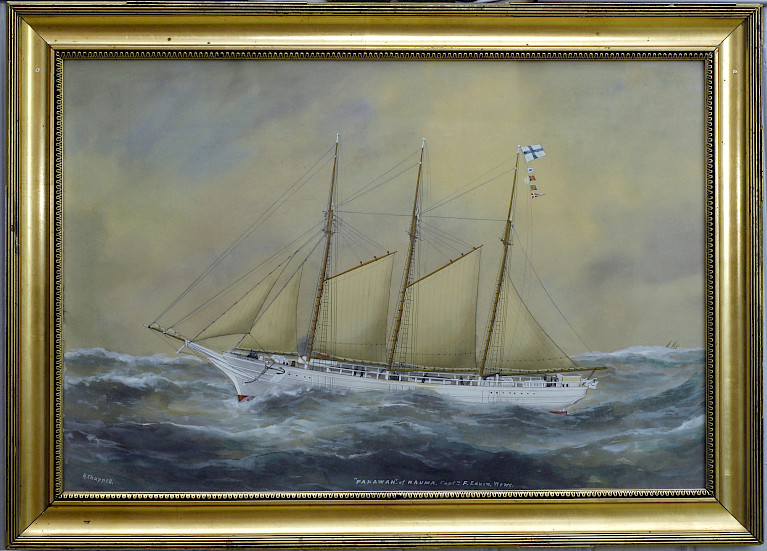
Ship Portraits
The painters of captain’s paintings worked in harbours. When a ship arrived, they often came and presented their art to the captain. If a deal was made, the finished painting was delivered to the customer in a few days. It is often said that the painters prepared their work before a ship arrived already, just finishing the details after making a deal.
This is not true. In the sailing ship era, harbour times were several weeks long, and a painter had ample time to finish his work before the ship sailed again. There was an abundance of ships: if an artist had sold a painting to every tenth captain, we would have tens of thousands of captain’s paintings in Finland alone.
Another principal type of maritime painting are ship portraits. These present the ship in the same way as above, but there are no particulars of the captain. The name of the ship is nearly always given in the bottom of the painting.
The third principal type is a nautical presentation of a ship; the definition is not as precise as above. The ship is not necessarily portrayed from side, and there is often more sea than in the first two types.
The artists were called ”pier-head-painters”. The quality of their art varies. Part of the painters were earlier seamen. They were able to paint the rig and ropes exactly as they were, which the customers, of course, expected.
Although only part of the painters signed their paintings, most of them have been identified. This is based on the details in the background. Many artists painted lighthouses, other ships etc. in the background, and they would always repeat the same motifs, almost as their hallmarks. When an artist signed one of his paintings, the rest of them were signed at the same time.
A painter could sometimes do a trick and paint the same ship in the background in a smaller size and perhaps from stern quarter.
Most captain’s paintings are gouaches or aquarelles. Oil paintings are less frequent and often larger in size.